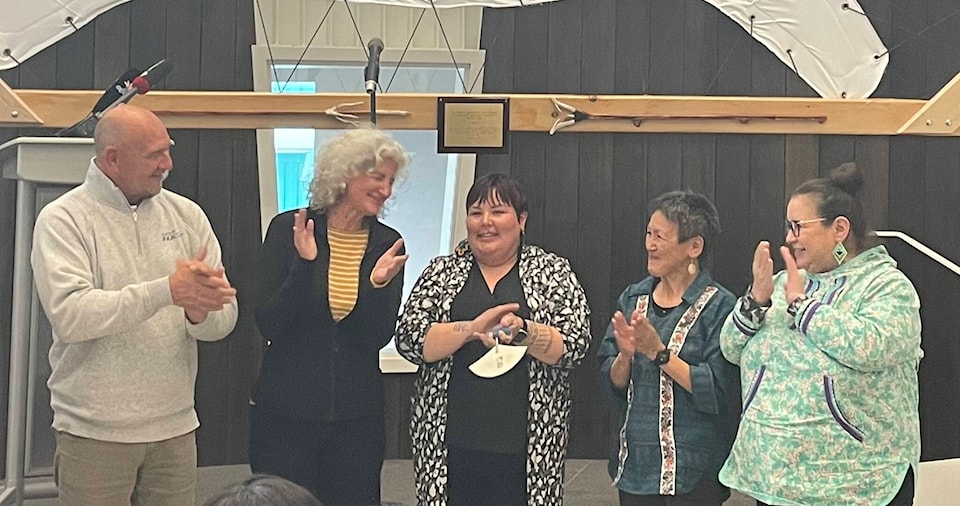Students and staff at the Nunavut Arctic College will start the coming school year with unprecedented internet access, and academics in other parts of the territory might not be far behind.
On Tuesday, Aug. 22, the Iqaluit campus hosted a ribbon-cutting ceremony to commemorate its connection to Canada’s National Research and Education Network (NREN), an ultra-high-speed satellite network that is purpose-built for research, education and innovation.
Nunavut was the last of Canada’s 13 provinces and territories to gain access to the national network, which is connected to more than 100 similar networks in countries around the world.
“I think this represents a great opportunity not only for Nunavut Arctic College and the students we serve but for Nunavummiut overall,” college president Rebecca Mearns said to a large crowd at the ceremony.
Nunavut Arctic College (NAC) is now one of more than 750 universities, colleges, research hospitals, government research labs and similar facilities that comprise Canada’s NREN.
While the NREN connection is currently only available at NAC’s Iqaluit headquarters, the hope is that it will be available at the college’s campuses in Arviat, Rankin Inlet, Cambridge Bay and Clyde River in the fall, and other communities in the future.
Joanna Quassa, the Government of Nunavut minister responsible for NAC, said the college’s connection to the network was made possible by a “unity of effort and commitment” from the parties involved.
“This network will bring realtime benefits to the college, allowing its students, staff and programs to have dedicated bandwidth,” she said. “This is timely given the beginning of the new academic year starting in the coming weeks.
“Turning on this network in five communities is an important first step,” she added. “I wish this happened in the past while I was in college.”
Canada’s NREN, which is powered by a not-for-profit organization called CANARIE, is capable of carrying large data files, even from remote locations, and will allow students and researchers in Nunavut to access research instruments, high-performance computing centres and datasets from great distances. The network, which has a speed of 200 gigabits per second, carried 471,000 terabytes of traffic in 2021-22.
“Networks connect people,” CANARIE president Kathryn Anthonisen said after the event. “We forget about that, and we talk a lot about the technology and the cable and the routers and all that, but really at the end of all that is people, and data, and perspectives, and knowledge that can be freely shared among as many people as possible.”
“The focus of the network in these early days is really to support Nunavummiut in their research and education, and driving new opportunities that perhaps nobody’s even thought of yet. With this infrastructure, you can do incredible things.”
NAC’s connection to NREN was significant enough the Prime Minister Justin Trudeau prepared a statement for the ribbon-cutting ceremony, which Mearns read aloud.
“There’s no small number of issues facing us today, however, through effective research, insight, debate and collaboration, there is no challenge too great for Canada to overcome,” Trudeau said.
“Nunavut Arctic College connecting Nunavut to the National Research and Education Network — a brilliant system expanding our country’s researchers, educators and innovators’ reach — will certainly help advance research partnerships and education opportunities for all Nunavummiut. Simultaneously, this partnership will also allow for the rest of Canada and the world to learn from the rich communities within Nunavut. Indeed, today is an historic moment.”
NAC’s connection to the NREN was made possible by financial contributions from the college itself, the Canadian Internet Registration Authority (CIRA), the Nunavut Implementation Panel and CANARIE. Most of CANARIE’s funding is provided by the Government of Canada.
